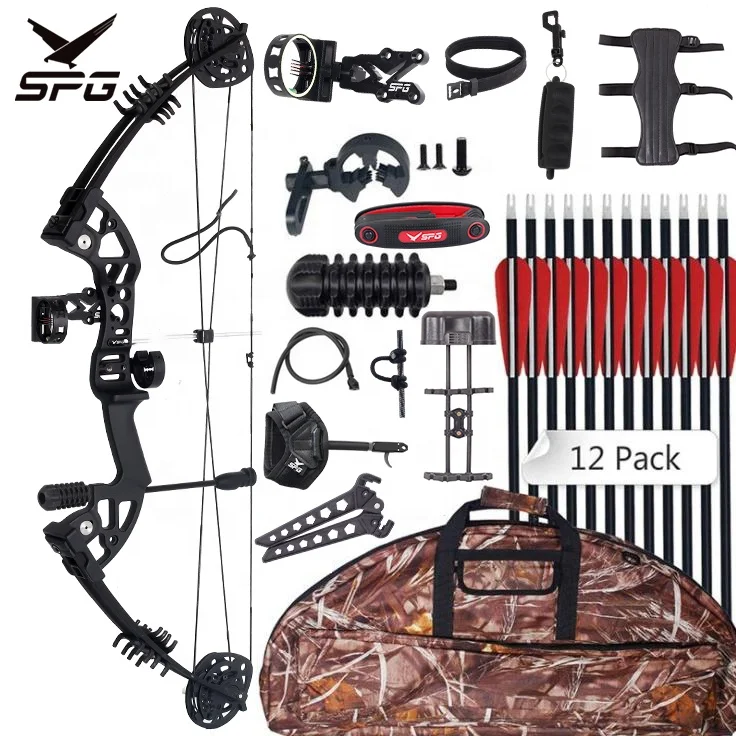Optimize Your Archery Precision With These Bow Stabilizer Techniques
One essential aspect that can substantially affect your performance is the proper application of bow stabilizers. Whether you are a skilled archer looking to fine-tune your skills or a newcomer anxious to enhance your precision, grasping these bow stabilizer methods could be the trick to hitting your mark with unrivaled consistency.
Advantages of Utilizing Bow Stabilizers
Making use of bow stabilizers can substantially enhance an archer's precision and total performance by decreasing bow torque and vibration. Furthermore, bow stabilizers moisten vibration, which not only boosts the comfort of capturing yet also protects against the bow from jumping upon release, therefore assisting in preserving correct objective.
In addition, bow stabilizers can assist in holding the bow consistent, especially during gusty problems or when firing from longer distances. The added weight at the front of the bow gives stability and balance, permitting the archer to focus on aiming without the disturbance of bow movement. On the whole, the benefits of using bow stabilizers expand beyond just precision, improving the archer's experience and performance in numerous shooting situations.
Picking the Right Bow Stabilizer
Choosing the suitable bow stabilizer is crucial for optimizing your archery equipment and improving shooting efficiency. When choosing a bow stabilizer, there are several aspects to consider to ensure you locate the best suitable for your requirements. Think about the weight of the stabilizer. Much heavier stabilizers can help minimize bow torque and absorb more resonance, resulting in a steadier objective. Lighter stabilizers provide more ability to move, which can be useful in certain shooting circumstances.

Lastly, think about the layout of the stabilizer. Some stabilizers include adjustable weights or dampeners that permit you to personalize the equilibrium and feel of your bow. Inevitably, picking the best bow stabilizer involves discovering a balance in between weight, product, size, and layout to boost your capturing accuracy and general performance.
Correct Installment Strategies
To make certain ideal performance and safety link and security in archery, understanding proper installation techniques for your bow stabilizer is essential. The initial step in installing a bow stabilizer is to determine the appropriate positioning on your bow. Most stabilizers are connected to the front of the riser, listed below the grasp, to aid counterbalance the weight of accessories such as quivers and views. Ensure that the stabilizer is not conflicting with various other parts or impeding your shooting type.
Next, securely affix the stabilizer to the bow utilizing the ideal placing hardware. It is important to tighten the stabilizer snugly to avoid any tottering throughout shots. Some stabilizers feature flexible weights that can be added or removed to tweak the equilibrium of your bow. Trying out various weight setups to find the optimum equilibrium that fits your capturing style.

Changing Stabilizer Weight and Size
After making sure the appropriate installation of your bow stabilizer, the following step includes readjusting the weight and size to enhance its efficiency in improving archery accuracy. The weight of the stabilizer plays an important function in reducing bow movement during the shot cycle.
A longer stabilizer can provide better stability by increasing the range between the bow and the weight at the end of the stabilizer. Alternatively, a much shorter stabilizer offers extra ability to move and may be liked by archers that original site value agility and fast motions during capturing.
Advanced Stabilizer Tuning Tips
Attaining ideal bow security and precision in archery requires a nuanced method to advanced stabilizer adjusting. Advanced stabilizer adjusting entails fine-tuning numerous elements to enhance the bow's equilibrium, reduce resonance, and improve general precision. One crucial strategy is to explore different stabilizer setups, including back-bar and side-bar configurations, to locate the suitable equilibrium between security and ability to move for your shooting design. bow stabilizer. Additionally, changing the angle and positioning of the stabilizer can have a substantial effect on exactly how the bow reacts upon launch.
An additional crucial directory facet of innovative stabilizer adjusting is enhancing the damping residential properties of the stabilizer system. Checking out different materials for the stabilizer construction, such as carbon fiber or aluminum, can additionally affect the bow's performance by altering its weight circulation and tightness.
Final Thought
In verdict, maximizing archery accuracy can be attained with the correct choice, installment, and modification of bow stabilizers. On the whole, integrating bow stabilizers right into archery practice can lead to better efficiency and increased accuracy.
Using bow stabilizers can substantially boost an archer's precision and total efficiency by minimizing bow torque and vibration. Longer stabilizers offer greater stability and balance, especially for long-distance shooting, while shorter stabilizers offer more convenience and are simpler to navigate in limited rooms (bow stabilizer). Carbon fiber stabilizers are resilient and lightweight, while aluminum stabilizers are durable and give excellent resonance wetting
A longer stabilizer can offer higher security by raising the distance between the bow and the weight at the end of the stabilizer.One more crucial aspect of sophisticated stabilizer adjusting is maximizing the damping homes of the stabilizer system.